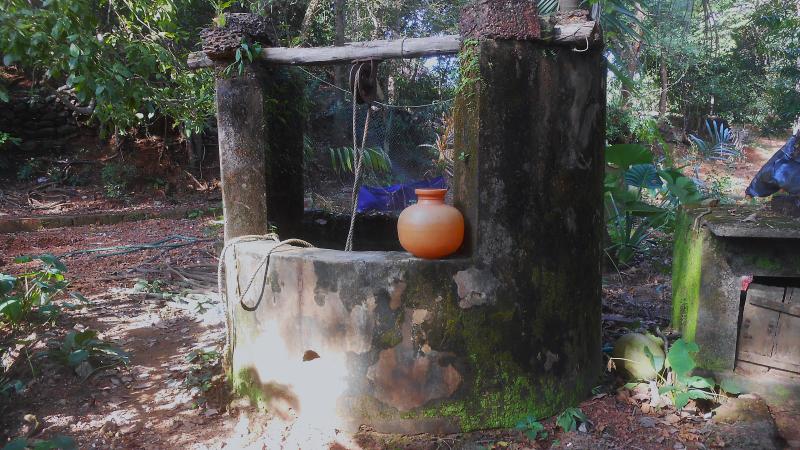
As the world grapples with the escalating challenges of climate change and growing populations, the conversation around clean, safe drinking water has never been more critical. While surface water sources like rivers and lakes are visible and easily monitored, there’s a vast, unseen reservoir beneath our feet that’s even more vital: groundwater. In fact, nearly 97.2% of the world’s freshwater is stored underground. However, this hidden treasure is increasingly under threat from pollution and overextraction, putting millions at risk of waterborne diseases and drought.
To understand the extent of the pollution, a team of researchers from Kannur University, PSG College of Arts and Science, and Karpagam Institute of Technology has investigated the groundwater quality in the bustling Kannur region of Kerala, India.
Did You Know? Even though we see a lot of water on Earth, less than 3% is freshwater, and a massive 97.2% of that freshwater is actually hidden underground as groundwater. |
The team embarked on a detailed study to uncover what was truly happening beneath the surface in Kannur. They found that while most of the groundwater samples were generally suitable for drinking, two specific locations, Anthoor and Ulikkal, showed relatively poor water quality. This was mainly due to higher iron levels and variations in pH. More concerning were the findings regarding heavy metals. Using a tool called the Heavy Metal Pollution Index (HMPI), the team identified several areas of high pollution. Edat, Peravoor, and Ramanthali, for example, registered the highest levels of lead. Other regions, like Madayi, Chirakkal, and Peralassery also exhibited high HMPI values, with the Edakkad area showing the highest overall HMPI reading.
While some heavy metals, such as iron, were found to be moderately and evenly distributed, suggesting natural origins from rocks and soil, others, like nickel, cadmium, and arsenic, showed high variability, pointing towards specific, localised contamination from human activities or unique geological conditions. For instance, arsenic levels in several samples, particularly in Edakkad, exceeded the World Health Organisation (WHO) guidelines for drinking water, indicating a potential risk. Cadmium concentrations, although generally below the WHO limit, were comparatively high and varied, possibly due to fertilisers or industrial waste. The overall chemistry of the groundwater in Kannur is a blend of natural processes, such as the dissolution of minerals from rocks, and human activities, including the intrusion of saline water, agricultural runoff, and wastewater discharge.
To uncover these threats, the research team employed a combination of fieldwork, laboratory analysis, and statistical modelling. Between January and May 2023, they collected 37 groundwater samples from various locations across Kannur District. Back in the lab, they analysed the samples for a range of physicochemical parameters like pH, electrical conductivity, and total dissolved solids. They also measured alkalinity, hardness, chloride, nitrite, and phosphate levels, comparing all these against stringent WHO standards.
For detecting heavy metals such as iron, zinc, copper, manganese, lead, cadmium, chromium, nickel, and arsenic, the samples underwent an acid digestion process to extract the metals from the water. The concentrations were then precisely measured using a technique called Atomic Absorption Spectrophotometry (AAS), which works by shining light through vaporised samples and measuring how much light the metal atoms absorb. But raw data, even from the most advanced instruments, can only tell part of the story.
To make sense of the complex relationships within the data, the researchers turned to statistical tools. They used descriptive statistics to summarise the basic properties of the water, and Pearson’s correlation coefficient to see how different parameters were related to each other. For example, a strong link between magnesium and calcium might suggest they come from similar sources, like agricultural runoff or dissolving carbonate minerals.
To provide an easy-to-understand score for water safety, they calculated a Water Quality Index (WQI) and a Heavy Metal Pollution Index (HMPI). These indices combine multiple measurements into a single number, enabling a quick assessment of whether the water is safe to drink and the extent of its contamination with heavy metals. Crucially, all these statistical insights were integrated with Geographic Information Systems (GIS). This mapping tool allowed the researchers to visualise the spatial distribution of pollutants and identify specific hotspots across the Kannur district.
This study improves upon previous efforts by demonstrating that GIS combined with statistical tools can provide valuable insights even from smaller datasets at the local level. This flexible approach offers a practical framework for future, larger-scale investigations. However, the relatively small sample size (37 samples) means that the findings might not be perfectly representative of the entire region and could lead to some uncertainty in the statistical results. Moreover, the lack of seasonal sampling is a notable limitation, as water quality can vary significantly between dry and monsoon periods in Kerala’s climate. The current samples represent only a snapshot in time, and the team emphasises the need for long-term monitoring across different seasons to get a truly accurate picture of groundwater quality trends and suitability.
The study offers a critical baseline of data on groundwater quality and associated health risks. It arms local authorities with the information needed to protect public health and ensure access to safe drinking water. The identified pollution hotspots allow for targeted interventions, rather than broad, expensive measures across the entire region. Most importantly, for heavy metal contamination, the study paves the way for specific mitigation strategies like phytoremediation (using plants to clean up pollution), soil washing, or adding stabilising agents like biochar to immobilise contaminants. This means a future with more sustainable groundwater management, better waste management practices, and regular surveillance to mitigate risks and safeguard this precious resource for generations to come.
This article was written with the help of generative AI and edited by an editor at Research Matters.






